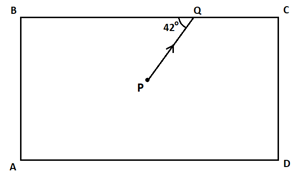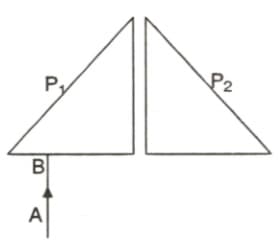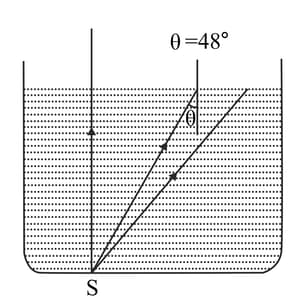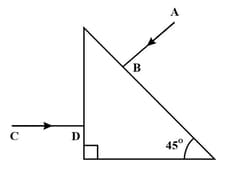Who is the father of the Fibre optics?
Important Questions on Light
The diagram below shows a light source P embedded in a rectangular glass block ABCD of critical angle 42°. Complete the path of the ray PQ till it emerges out of the block. Write necessary angles.

Give a suitable explanation for the given effect:
A crack in a windowpane appears silvery.
(b) What is the answer if there is no outer covering of the pipe?

A mirage is a naturally-occurring optical phenomenon that creates the illusion of water. In this, light rays are bent to produce a displaced image of distant objects or the sky. It however can be captured with a camera. How is a mirage formed? Regions of air at different temperatures have different refractive indices. Hot air is less dense and hence has a smaller refractive index than cool air. The air closer to the ground is hotter and has smaller refractive index. Thus, air has many layers with different refractive indices. Hence, when light from a tall object such as a tree passes through a medium whose refractive index decreases towards the ground, the ray of light undergoes total internal reflection, which is the complete reflection of a light ray at the boundary of two media, when the ray is in a medium with greater refractive index.
Answer the following question by choosing the correct option.
Mirage is a/an
A light ray travelling in glass medium is incident on glass-air interface at an angle of incidence . The reflected () and transmitted () intensities, both as function of , are plotted. The correct sketch is:
The figure shows two rays and of light incident on a right-angled glass prism. Copy the diagram and trace the path of each ray, giving reasons.
Two isosceles right angle prisms are arranged as shown in the figure alongside. Complete the path of the ray AB Along which it passes through the two prisms and emerges out.

In the given diagram a source of light is placed at the bottom of a beaker containing water. Complete the diagram. (Critical angle for water to air is )

A swimmer inside water looks up at the sky through the surface of water. The sky is bright due to daylight. He can see:


